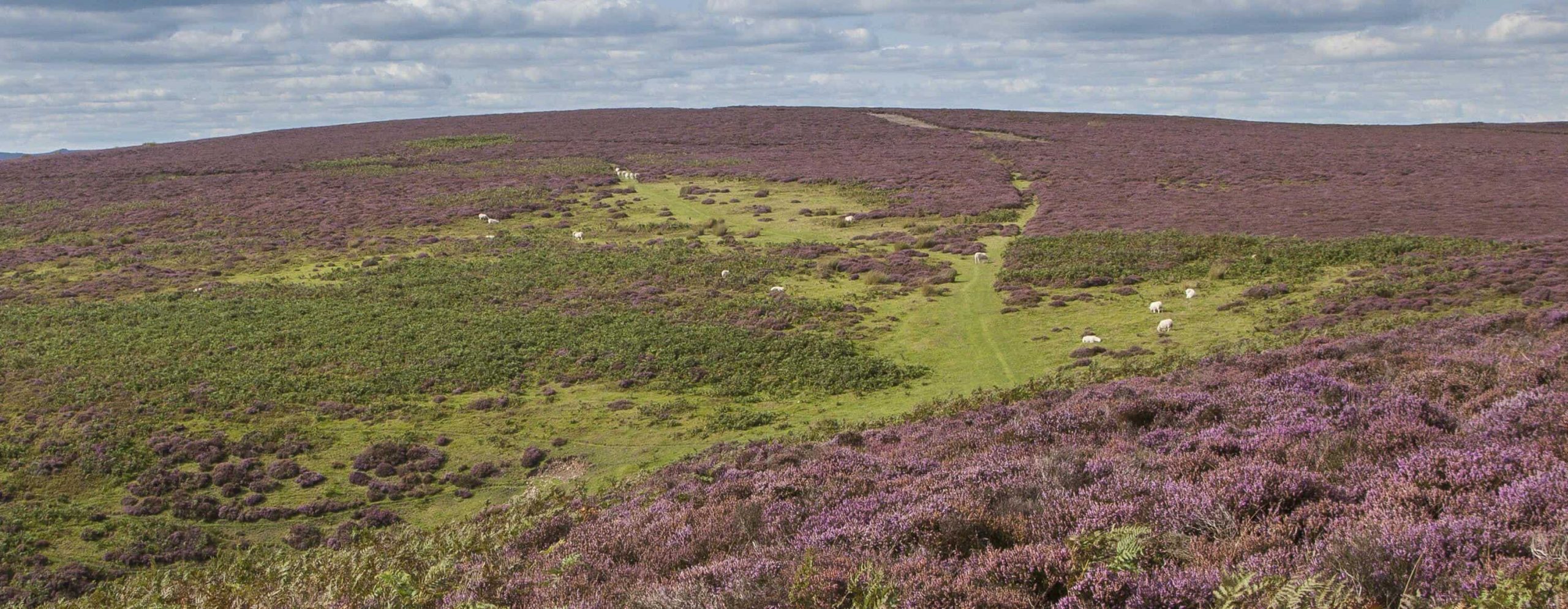
credit;PA
The dramatic spectacle of hillsides awash with purple heather is being hit by climate change, the National Trust has warned.
Instead of a purple haze, acres of heather on the Long Mynd in Shrophire and Holnicote on Exmoor have been turned brown due to last year’s hot, dry weather and an increase in pests caused by mild winters.
Up to 75% of the heather on the sites, both of which are looked after by the National Trust, is in poor health this year because of a combination of 2018’s drought and damage from the heather beetle.
The damage to the heather, which should be blooming through August and into early September, has knock-on effects for other wildlife, such as the red grouse and the emperor moth, whose caterpillars feed on the plants.
Last year’s prolonged hot summer, which Met Office experts said was made 30 times more likely due to climate change, restricted the supply of water to the heather, while a lack of rain during the winter and first half of this year also took its toll.
Milder winters, which are on the increase as temperatures rise, also led to a boost in beetle numbers, which damage the outer layers of the heather leaves and in turn make the plants more susceptible to drought stress, the trust said.
Peter Carty, countryside parkland and gardens manager for the trust in Shropshire, said: “Last year’s high temperatures, and subsequent lack of rain, damaged a large area of heather and it is clear from the orangey-brown colouration this year that the plants are seriously stressed and unlikely to flower.
“The milder winter also led to an increase in the heather beetle numbers, which are a natural element of the heather ecosystem, as it wasn’t cold enough to kill off their larvae.
“In places where heather was sheltered from the extreme or where damp conditions were present, the heather has survived.
“However, there will be no mass flowering this year.”
Keith Jones, climate change specialist at the trust, said: “We are seeing first-hand the impacts of climate change on at least two of these special landscapes within our care.
“With warming temperatures other trees and plants are increasingly more susceptible to pest and diseases.”
Other impacts include an explosion in the tick population and plane tree wilt, particularly in London, which is magnified in drought conditions, he said, while moorlands are more susceptible to wildfires.
At Holnicote, the National Trust team is planting trees to slow the flow of water up the valley and restoring wet habitats such as blanket bogs to counter dry conditions.
The prolonged warmer weather could also boost heather shield bugs, which are a natural predator to heather beetles.
While damage has occurred to hundreds of acres of heather, it is hoped the resilient plant will recover with careful management.